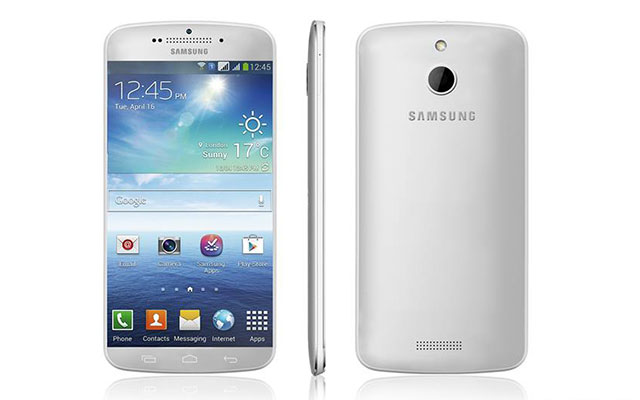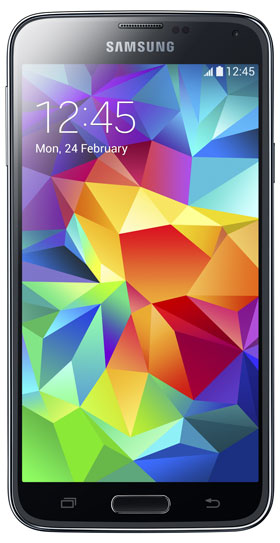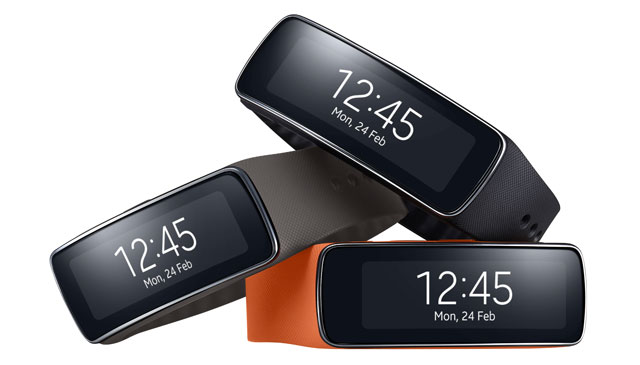
In an increasingly crowded and competitive smartphone space, market leader Samsung Electronics has taken the wraps off its latest flagship, the Galaxy S5, at an event in Barcelona, Spain.
The new device, unveiled by the company’s CEO, JK Shin, features new health monitoring technologies, including a heart rate monitor, along with an improved camera and better connectivity options. The phone is also water and dust resistant. Screen size is 5,1 inches, with resolution staying at full high-definition: 1 920 x 1 080 pixels.
Samsung has also finally ditched the cheap plastic back cover found on earlier Galaxy S models, opting for a “perforated” cover offering what the company calls a more “comfortable and natural grip”.
 The user interface has also received an overhaul — Samsung has gone for a simpler, less cluttered look with bigger, cleaner icons.
The user interface has also received an overhaul — Samsung has gone for a simpler, less cluttered look with bigger, cleaner icons.
But let’s unpack the new features one by one.
First up is the new, super Amoled screen. Samsung claims to have integrated new technology that makes it easier to read the display, even in the “blazing sunshine”, while also allowing users to dim their screens far more than before to make it more comfortable to use in dark environments such as the bedroom and to avoid disturbing other people.
An “adaptive display” analyses incoming light and the content users are viewing to provide an optimal viewing experience.
Battery capacity has been improved, to 2 800mAh — that’s not as big as some rivals, but it should be enough to ensure a reasonable improvement over the Galaxy S4, especially since screen resolution has remained unchanged.
Of course, the extra battery will come in useful for the new communications features, including long-term evolution (LTE) connections in up to eight frequencies and the latest Wi-Fi technology and 802.11ac with multiple antennas for faster downloads.
Samsung claims Galaxy S5 users will be able to browse the Web continuously for 10 hours before the battery is exhausted. It also claims 12 hours of video playback.
There’s also an “ultra power saving mode”, which turns the display to black and white and shuts down all features except SMS and calls. This should prove useful for people who are waiting for urgent calls and don’t have access to a power outlet. Samsung claims that if the Galaxy S5 is down to 10% power, it will last up to 24 hours in this new mode.
Now, the camera. The Galaxy S5’s camera has a 16-megapixel sensor, new autofocus technology that Samsung claims is the world’s fastest — 0,3 seconds to focus — and now includes high dynamic range (HDR) for not only photos but video, too. A new feature called “selective focus” allows users to control what is in focus and what is not.
Taking a leaf out of Apple’s book, the S5 also includes a fingerprint scanner, with Samsung emphasising that enrolled fingerprints are stored on the device rather than in the cloud. There’s a new “private mode” where users can store photographs, files and other sensitive information that then can only be accessed by having the phone read their fingerprint.
The other big focus for Samsung with the S5 is the health and fitness market. Here the company has stolen a march on Apple, which is expected to make fitness a big focus of the upcoming iPhone 6 (and long-rumoured smart watch).

The S5 is the first smartphone with an integrated heart-rate monitor, Samsung claims.
The company has also launched new companion smart watches, the Galaxy Gear 2, a cheaper Gear Neo device, and a curved Gear Fit watch that features a full-colour super Amoled display. The Gear 2, which doubles as a music player as it has 4GB of flash storage on board, works with 17 Galaxy smartphones at launch and the 27g Fit with 20 – obviously, the S5 is among them.
Both the Gear 2 and Gear Fit have built-in heart-rate sensors and pedometers.
The new S Health app for the S5 comes with built-in support for ANT+, meaning it can also be used to connect with sports watches and fitness devices from other companies that support the communication standard.
The Galaxy S5, which will be available in four colours, will be launched in 150 countries, including South Africa, on 11 April. There’s no word yet on how much it will cost but it’s reasonable to assume it will cost about the same as the S4 did at launch. — (c) 2014 NewsCentral Media
- The writer travelled to Mobile World Congress in Barcelona as a guest of Samsung




